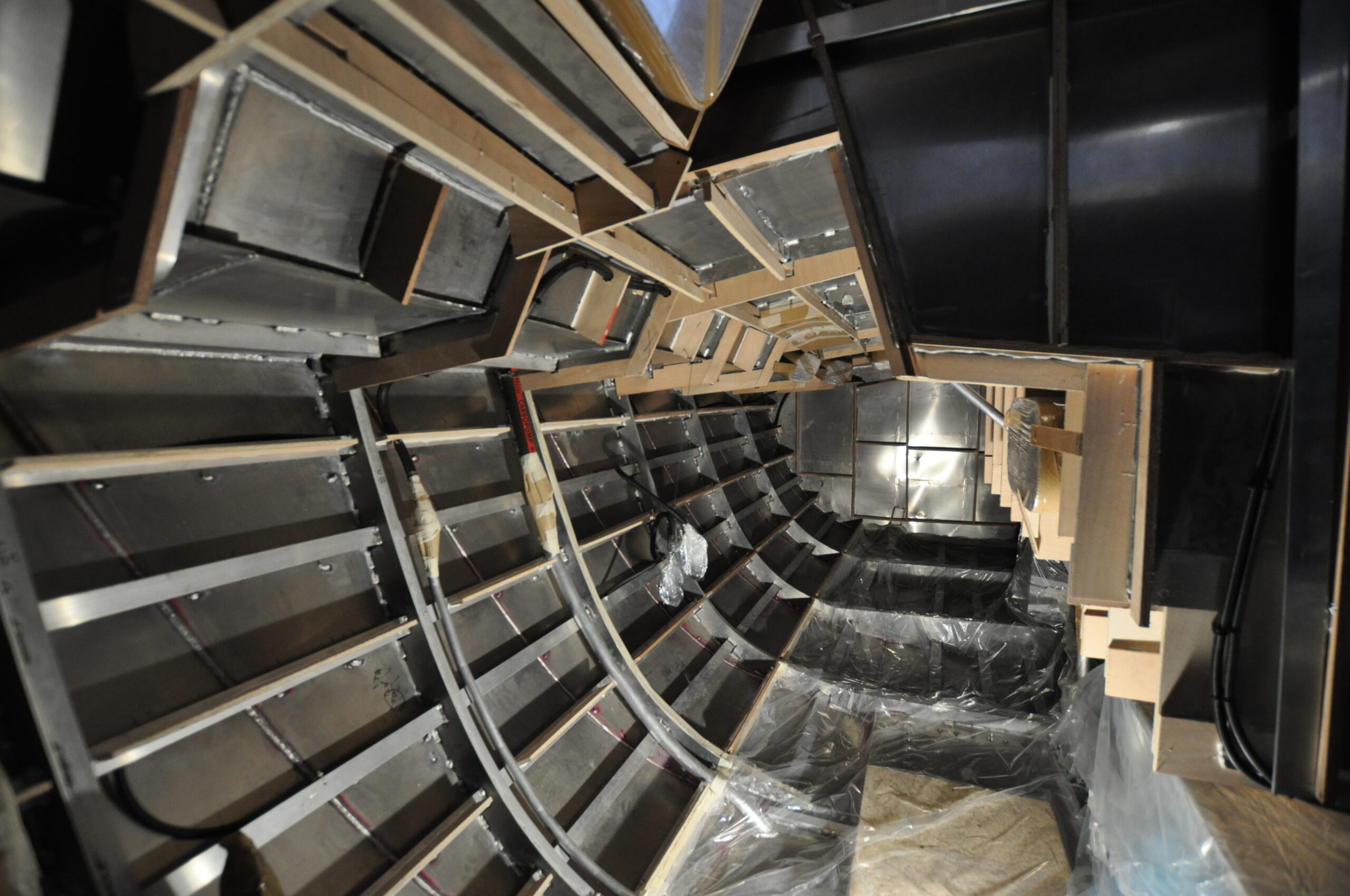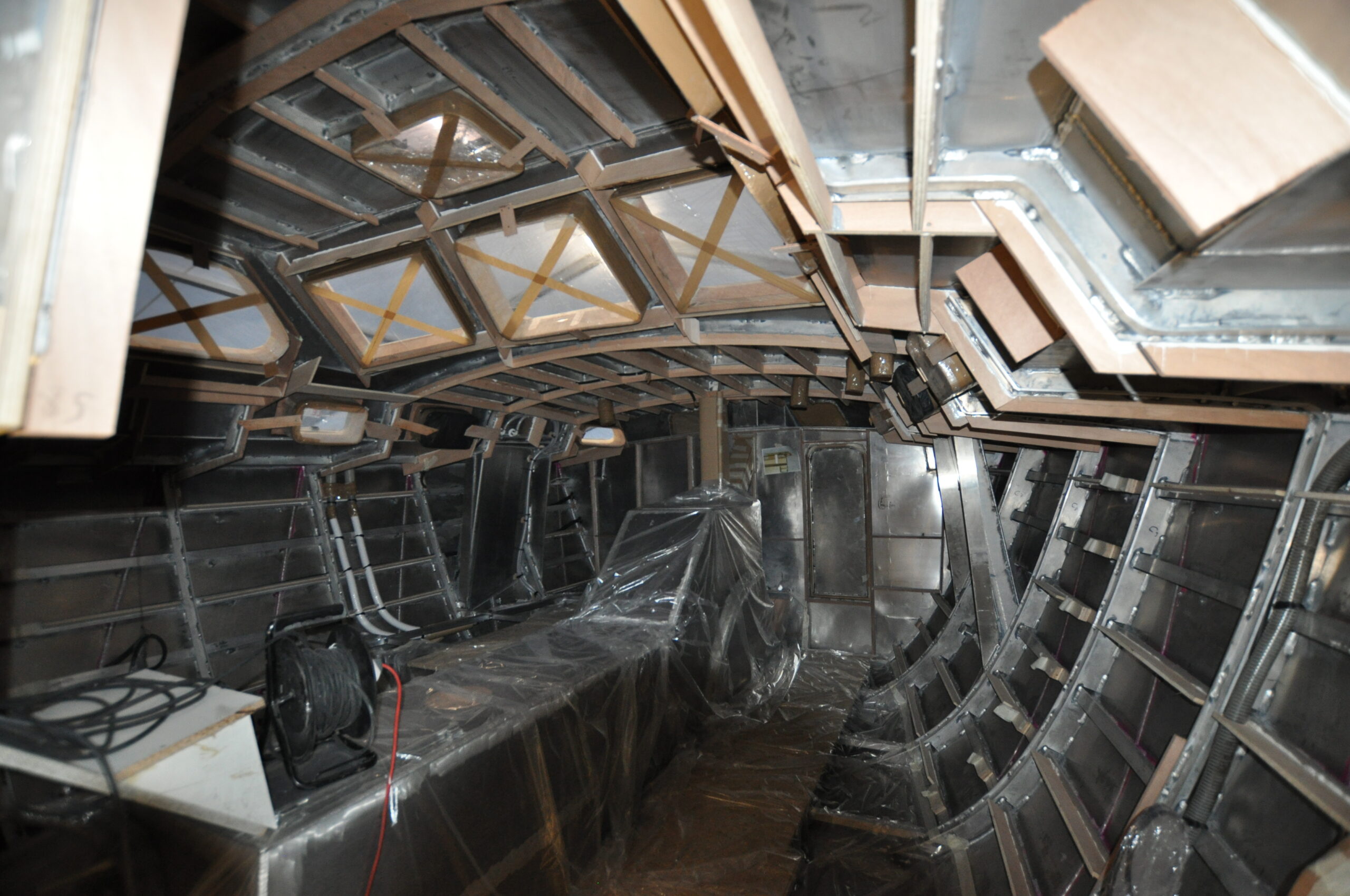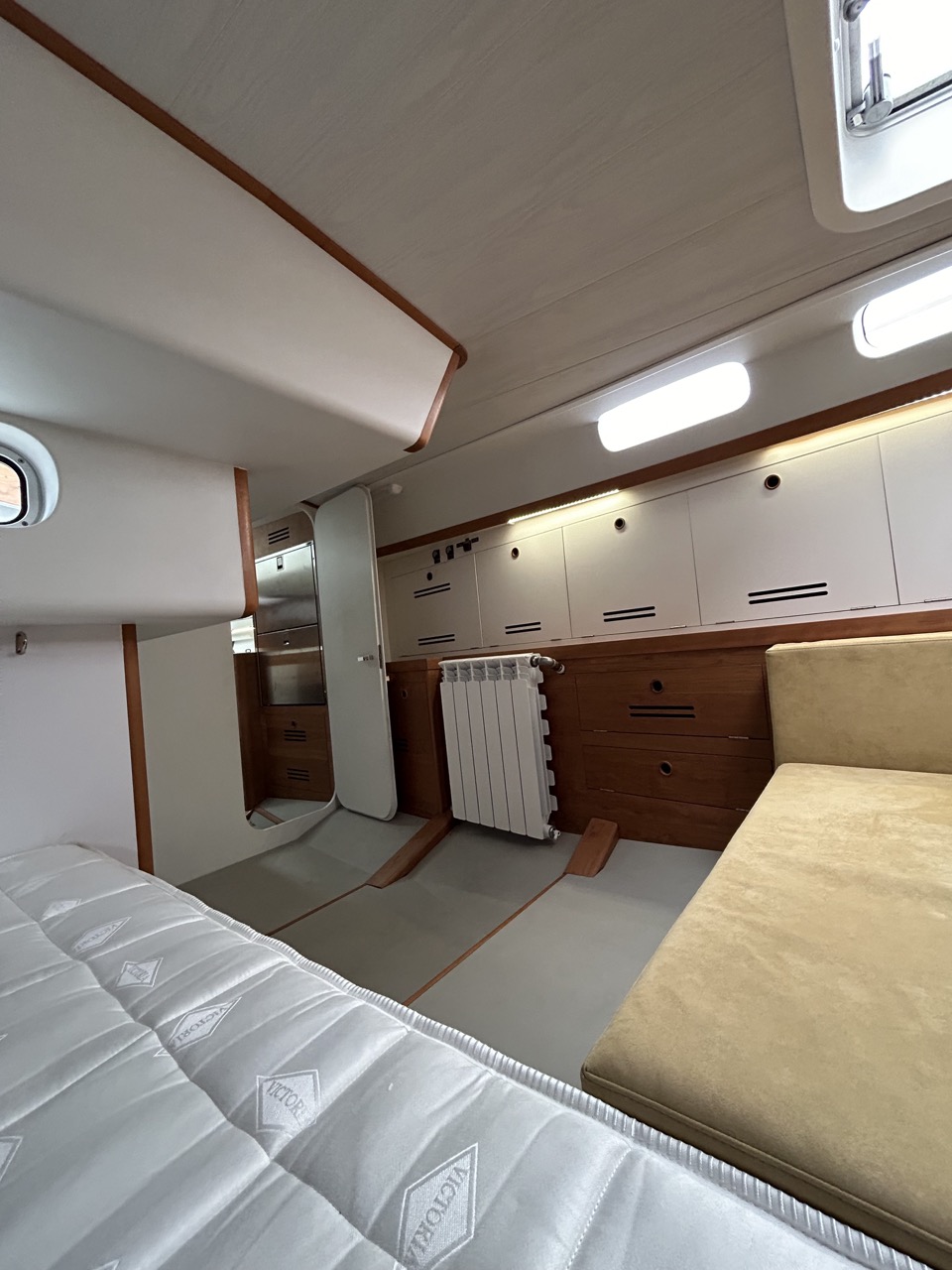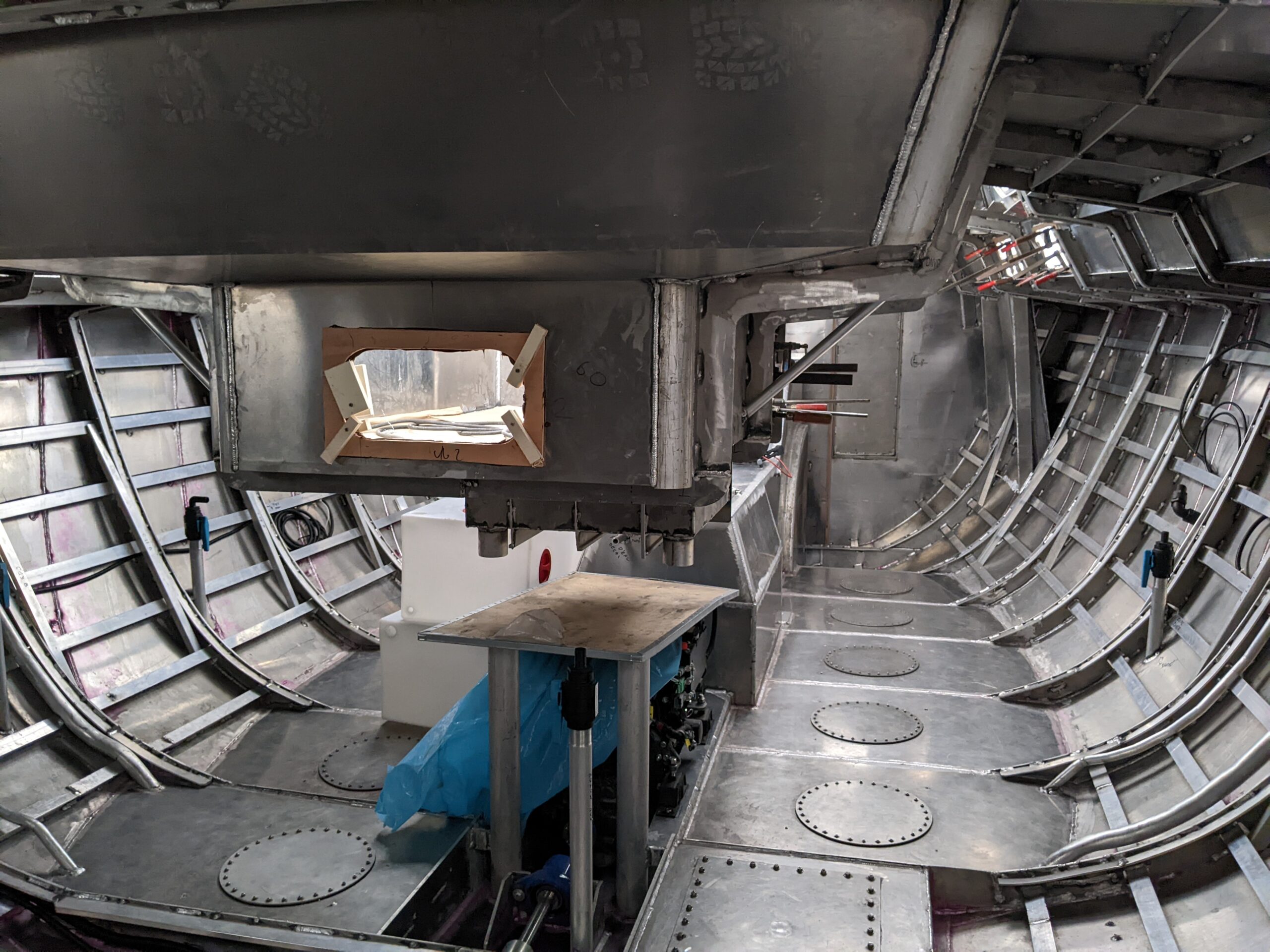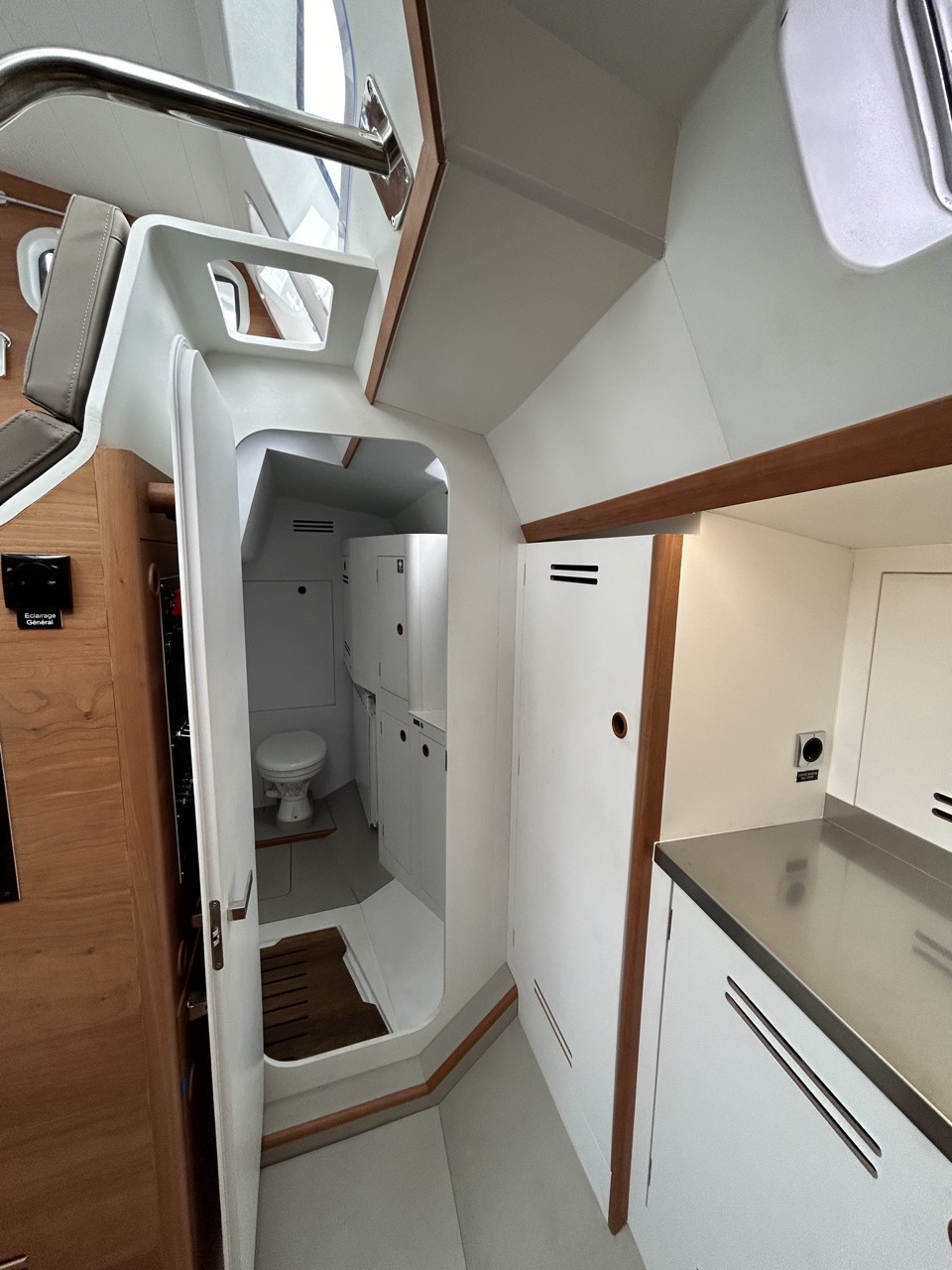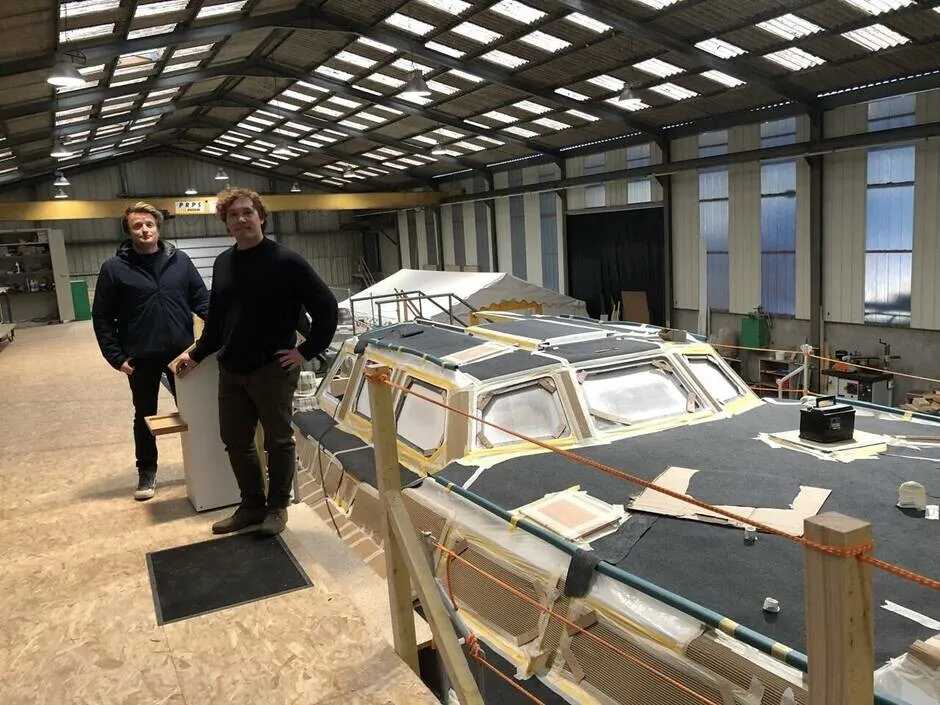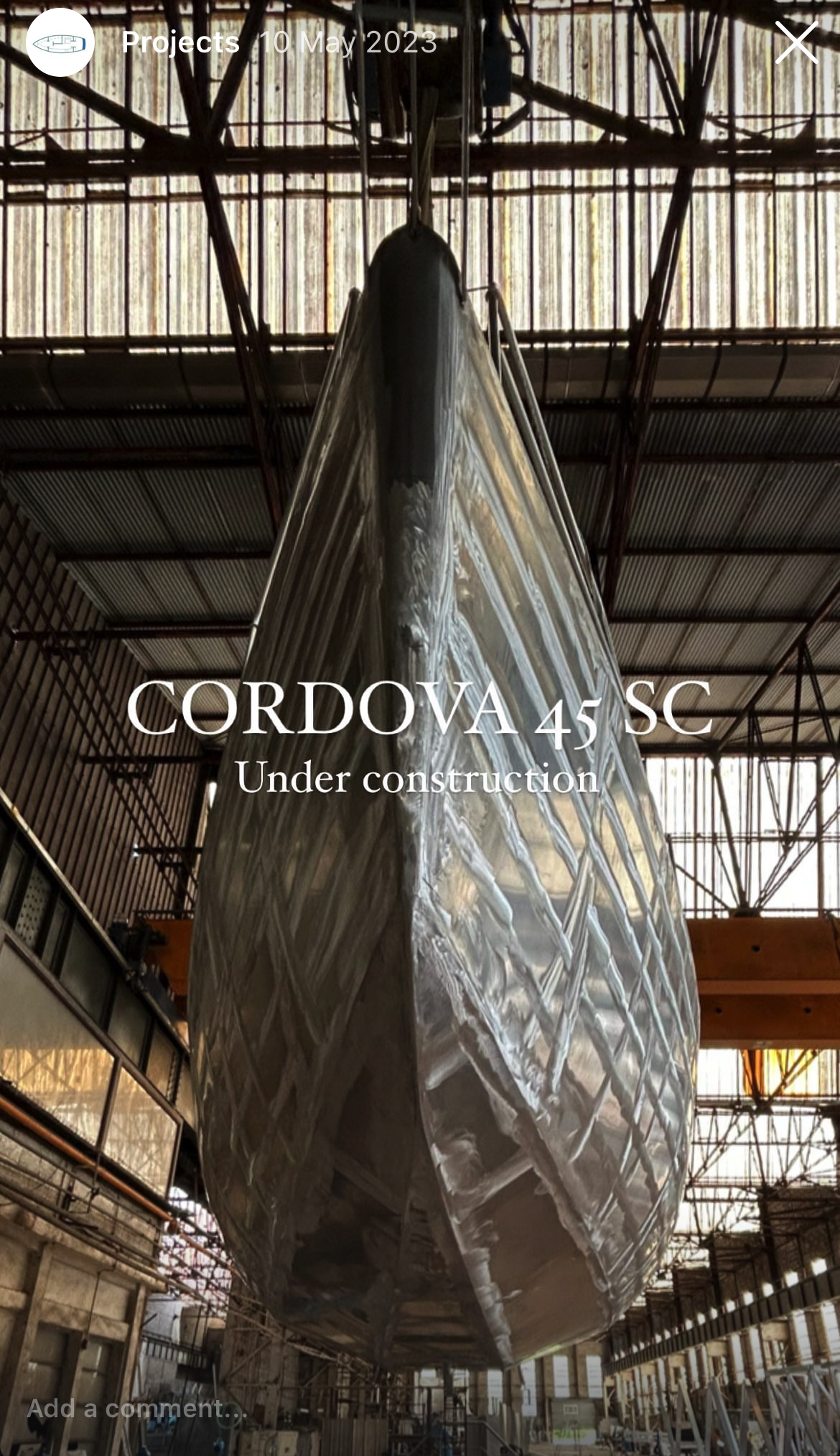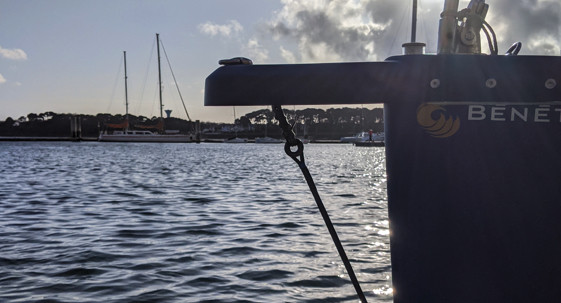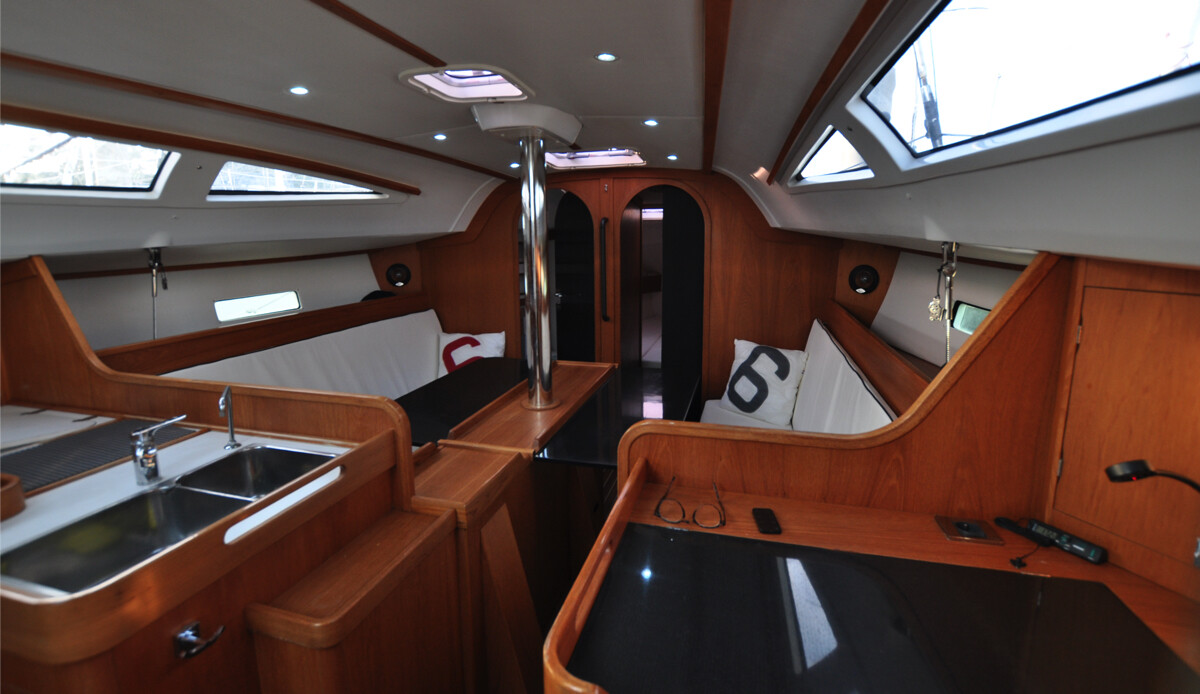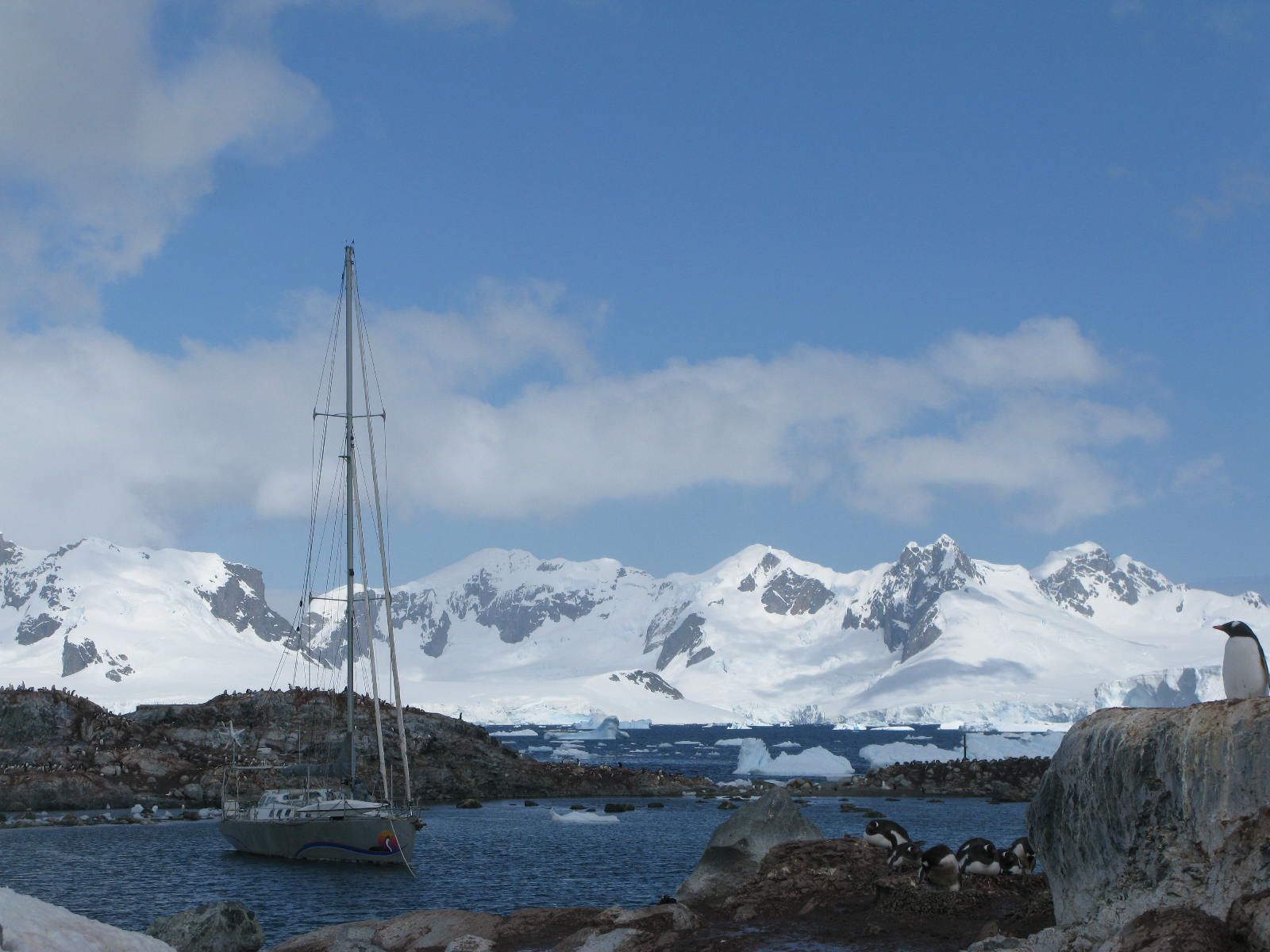
A unique project on an existing model
Actually, this yacht is the Patago 50 number 5, signed by Jean-François André. He designed it for his personal use, with the aim of sailing to Alaska for the winter. This aluminium yacht is just over 15 metres long, with specifications that meet three key criteria: performance, solidity and comfort.
A tried and tested yacht
To begin with, 16 years after the launch of his Shag 2 (Patago 50 n°4), and a few thousand nautical miles sailed between the two polar circles from Antarctica to Alaska, its owner is embarking on the construction of a sistership with some notable evolutions.
The Patago 50 ‘Shag 3’ is the result of a collaboration between its owner, architect Jean-François André and design studio DRB CONCEPT.
It’s a bespoke construction benefiting from the feedback of an enlightened sailor.

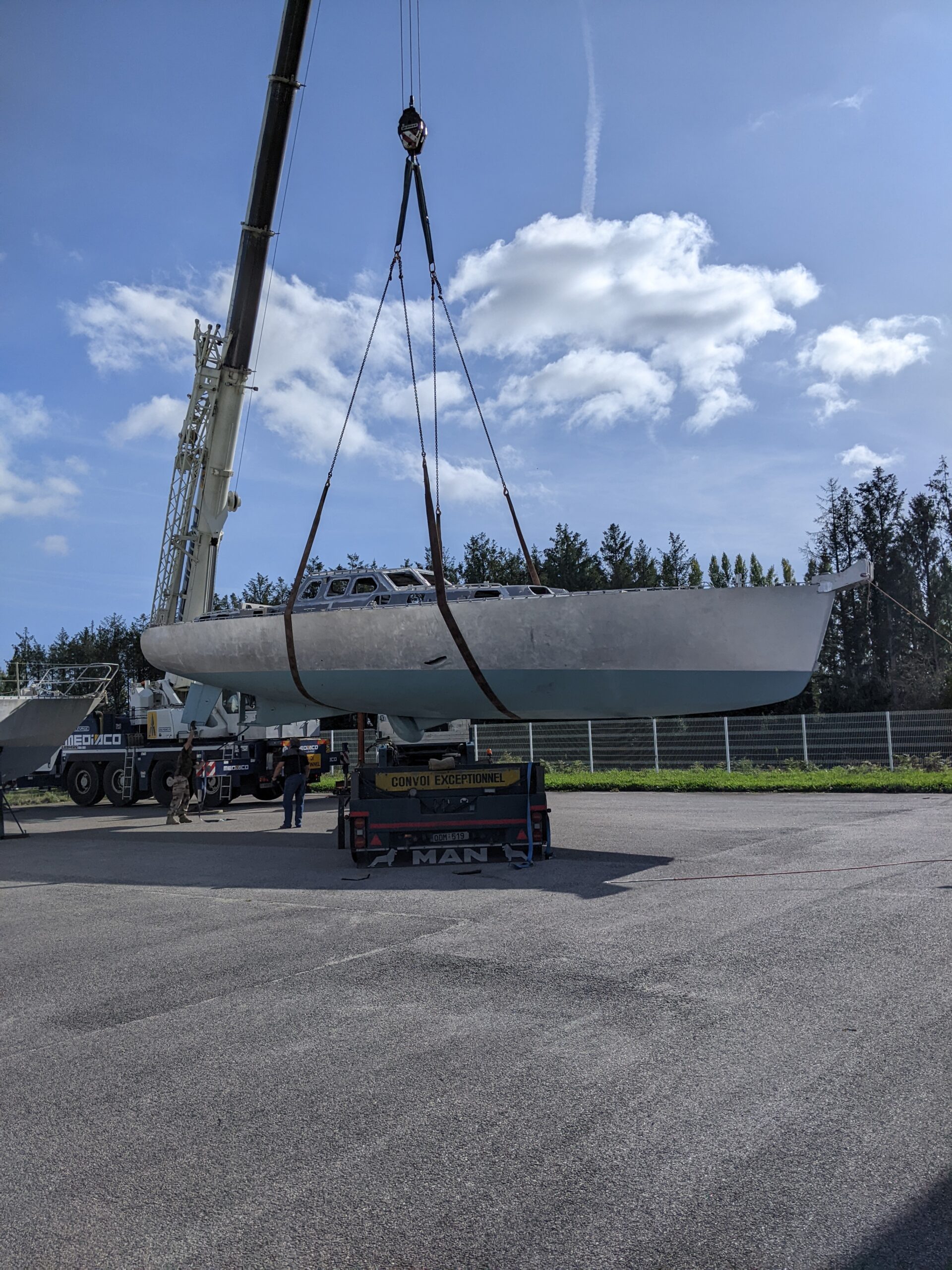
Major Innovation
The keel is pendular and retractable (+- 30°), and the sail area has been increased by 10%. The draught varies from 2.70 m to 1.10 m, allowing the yacht to access privileged anchorages without compromising performance.
The interior design is an ideal blend of comfort, performance and innovation
Its equipment has been designed to ensure perfect autonomy over several months, whether in a tropical zone or in the polar regions. It includes a lithium battery bank that can be charged by a wind turbine and solar panels, a watermaker, a Refleks Marine Heater system coupled to a closed water circuit for even heat distribution, a refrigeration and freezing system with a keel cooler providing significant energy savings (glycol water circuit with tank positioned at the bottom of the hull). It also has removable double glazing, tempered glass windows in the wheelhouse and 120 mm thick PU foam insulation.
 For this reason, safe movement around the boat is ensured by sturdy, well-positioned handrails, while teak footbraces provide good support for the feet, contributing to a comfortable and safe sailing experience.
For this reason, safe movement around the boat is ensured by sturdy, well-positioned handrails, while teak footbraces provide good support for the feet, contributing to a comfortable and safe sailing experience.
An interior layout equipped for polar explorations
In the saloon of the boat, the bench seat on the port side cleverly transforms into a comfortable double berth, thus offering appreciated versatility. On the other side, to starboard, a permanent low berth coexists with a removable bunk, thus drawing inspiration from concepts used in the field of ocean racing. This ingenious design maximizes the use of interior space, ensuring optimal comfort for the crew.
 In order to meet the needs of demanding sailors, the judiciously equipped kitchen is located in the heart of the saloon.
In order to meet the needs of demanding sailors, the judiciously equipped kitchen is located in the heart of the saloon.
A Refleks stove, a Techimpex cooker and a double Corian sink make up a functional space which in no way sacrifices the vessel’s performance. So the choices of materials are also designed to maintain a balance between lightness and robustness, with finishes in PET foam/thin plywood sandwich, thus ensuring a solid structure without weighing down the boat.
A sailboat to live in: Extreme Comfort for Polar Expeditions
A raised saloon with the option of converting the table into a double berth. In the port passageway, there’s a spacious bathroom, a practical workshop that’s quick to access and close to the companionway, a technical room with a compact washing machine under the wheelhouse benches.
 A Spacious Owner’s Cabin
A Spacious Owner’s Cabin
At the rear, the spacious owner’s cabin occupies the entire dedicated volume, delimited from the rest of the boat by a technical area which houses the exhaust, the watermaker and the equipment related to black water. This design guarantees effective insulation of technical elements, thus preserving cabin comfort. The owner’s cabin offers a true haven of peace with a generous bed, a comfortable reading bench and a multitude of storage spaces. It is a space designed to provide occupants with maximum comfort and privacy, creating an atmosphere conducive to relaxation and rest, even in the most demanding conditions at sea.
Strategic storage
In addition, the front section of the boat is specially dedicated to storing the equipment necessary for months of expeditions in extreme environments. In addition to serving as a strategic storage area, this part houses a large anchor tray, carefully designed to promote the centering of weights on board. It is also in this area that the nerve center of the boat’s hydraulic system is located with the hydraulic power plant, the cylinders for the keel and its lifting system. This thoughtful layout centralizes essential hydraulic components, facilitating maintenance and ensuring the boat’s performance, particularly during expeditions in extreme conditions.
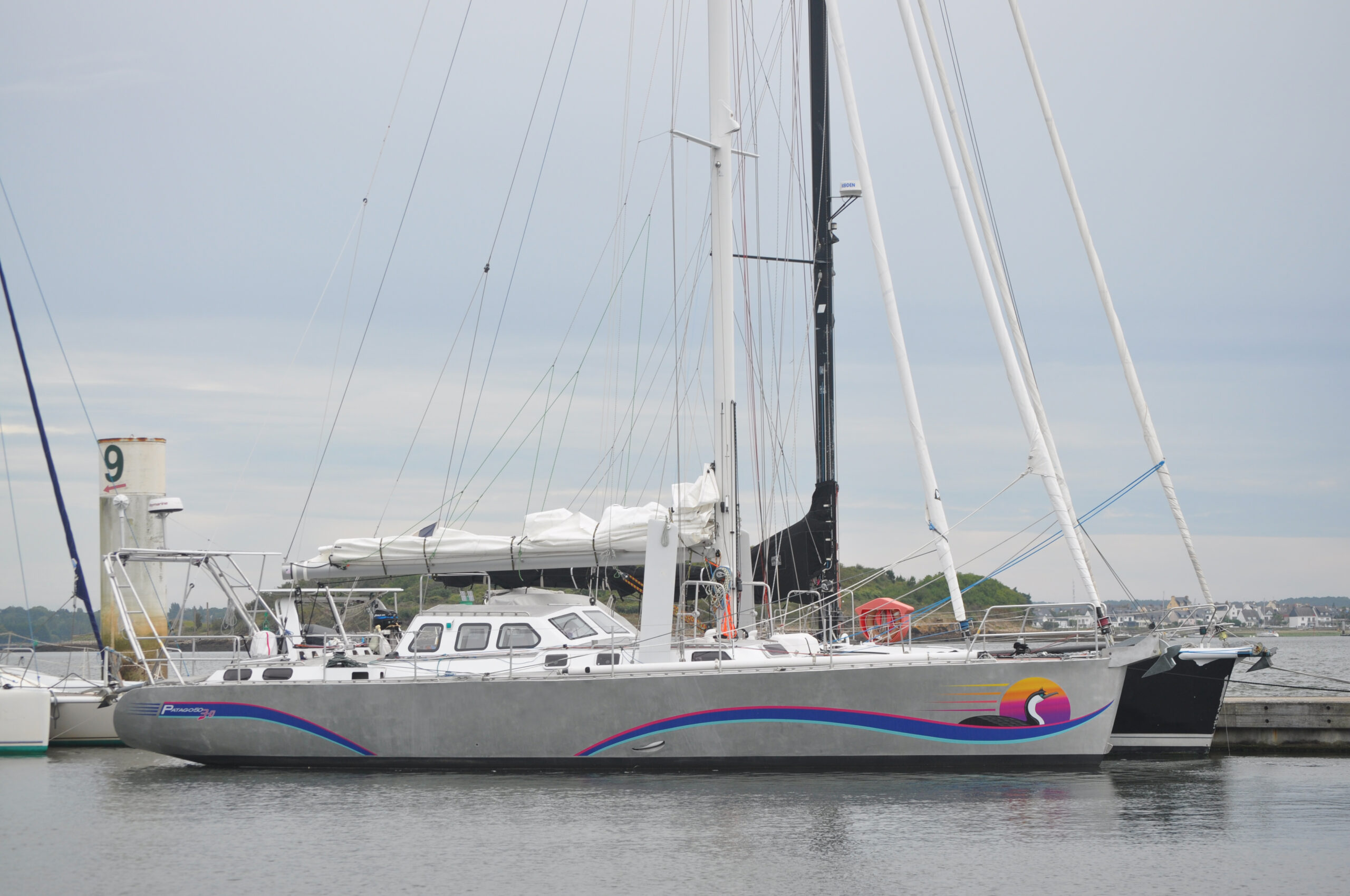
In summary, the collaboration between Dream Racer Boats and DRB Concept has given birth to an exceptional creation, the Patago 50. This tailor-made vessel, designed to face the most extreme conditions, represents an ideal fusion between comfort, performance and innovation. It is a true masterpiece intended to explore horizons that most would not even dare to imagine. The Patago 50, Grand Polar Explorer, embodies excellence in naval design, providing an unrivaled sailing experience for those who aspire to push the boundaries of polar exploration at sea.

